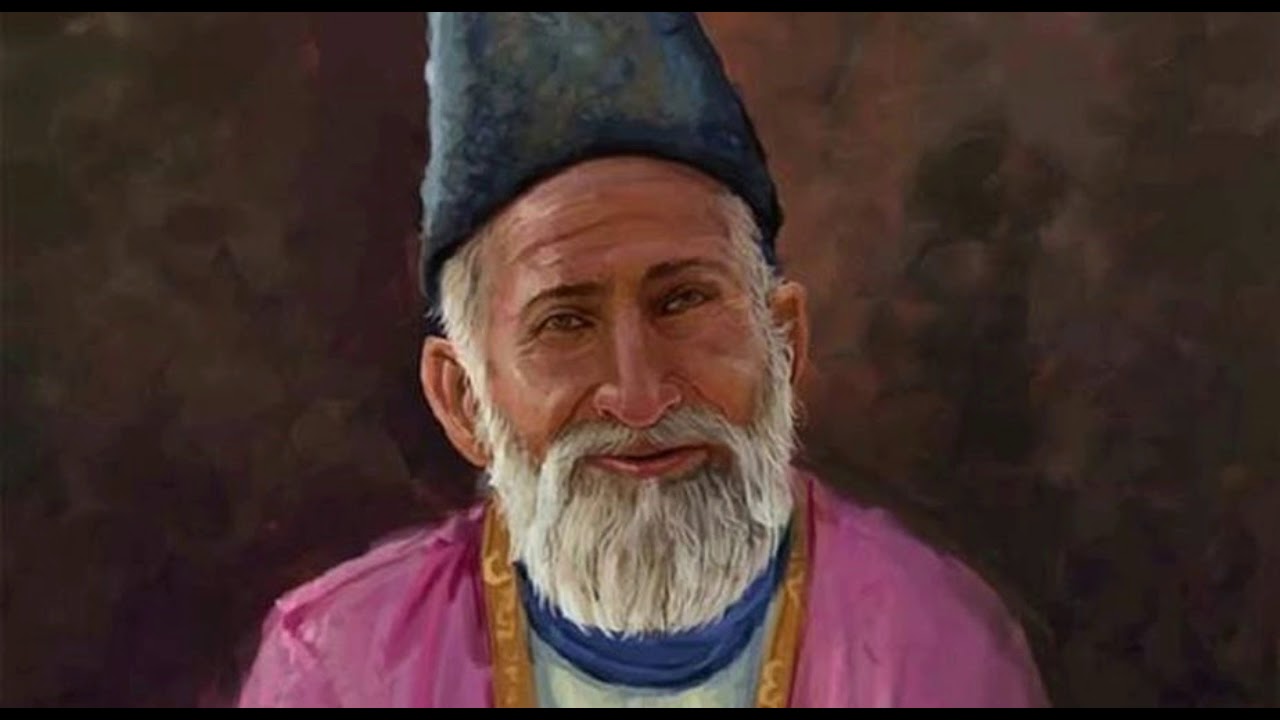
Mirza Ghalib
Biography
Mirza Asadullah Baig Khan was a classical Urdu and Persian poet from India during British colonial rule. His also known as 'Mirza Asadullah Khan Galib', 'Mirza Galib', 'Dabir-ul-Mulk' and 'Najm-ud-Daula'. His pen-names was Ghaliband Asad or Asad or Galib. During his lifetime the Mughals were eclipsed and displaced by the British and finally deposed following the defeat of the Indian rebellion of 1857, events that he wrote of. Most notably, he wrote several ghazals during his life, which have since been interpreted and sung in many different ways by different people. He is considered, in South Asia, to be one of the most popular and influential poets of the Urdu language. Ghalib today remains popular not only in India and Pakistan but also amongst diaspora communities around the world.
Family and Early Life
Mirza Ghalib was born in Agra into a family descended from Aibak Turks who moved to Samarkand after the downfall of the Seljuk kings. His paternal grandfather, Mirza Qoqan Baig Khan was a Saljuq Turk who had immigrated to India from Samarkand (now in Uzbekistan) during the reign of Ahmad Shah (1748–54). He worked at Lahore, Delhi and Jaipur, was awarded the subdistrict of Pahasu (Bulandshahr, UP) and finally settled in Agra, UP, India. He had 4 sons and 3 daughters. Mirza Abdullah Baig Khan and Mirza Nasrullah Baig Khan were two of his sons. Mirza Abdullah Baig Khan (Ghalib's father) got married to Izzat-ut-Nisa Begum, and then lived at the house of his father in law. He was employed first by the Nawab of Lucknow and then the Nizam of Hyderabad, Deccan. He died in a battle in 1803 in Alwar and was buried at Rajgarh (Alwar, Rajasthan). Then Ghalib was a little over 5 years of age. He was raised first by his Uncle Mirza Nasrullah Baig Khan. Mirza Nasrullah Baig Khan (Ghalib's uncle) started taking care of the three orphaned children. He was the governor of Agra under the Marathas. The British appointed him an officer of 400 cavalrymen, fixed his salary at Rs.1700.00 month, and awarded him 2 parganas in Mathura (UP, India). When he died in 1806, the British took away the parganas and fixed his pension as Rs. 10,000 per year, linked to the state of Firozepur Jhirka (Mewat, Haryana). The Nawab of Ferozepur Jhirka reduced the pension to Rs. 3000 per year. Ghalib's share was Rs. 62.50 / month. Ghalib was married at age 13 to Umrao Begum, daughter of Nawab Ilahi Bakhsh (brother of the Nawab of Ferozepur Jhirka). He soon moved to Delhi, along with his younger brother, Mirza Yousuf Khan, who had developed schizophrenia at a young age and later died in Delhi during the chaos of 1857.
Career
Ghalib started composing poetry at the age of 11. His first language was Urdu, but Persian and Turkish were also spoken at home. He got his education in Persian and Arabic at a young age. When Ghalib was in his early teens, a newly converted Muslim tourist from Iran (Abdus Samad, originally named Hormuzd, a Zoroastrian) came to Agra. He stayed at Ghalibs home for 2 years. He was a highly educated individual and Ghalib learned Persian, Arabic, philosophy, and logic from him.
Although Ghalib himself was far prouder of his poetic achievements in Persian, he is today more famous for his Urdu ghazals. Numerous elucidations of Ghalib's ghazal compilations have been written by Urdu scholars. The first such elucidation or Sharh was written by Ali Haider Nazm Tabatabai of Hyderabad during the rule of the last Nizam of Hyderabad. Before Ghalib, the ghazal was primarily an expression of anguished love; but Ghalib expressed philosophy, the travails and mysteries of life and wrote ghazals on many other subjects, vastly expanding the scope of the ghazal. This work is considered his paramount contribution to Urdu poetry and literature.
In keeping with the conventions of the classical ghazal, in most of Ghalib's verses, the identity and the gender of the beloved is indeterminate. The critic/poet/writer Shamsur Rahman Faruqui explains that the convention of having the "idea" of a lover or beloved instead of an actual lover/beloved freed the poet-protagonist-lover from the demands of realism. Love poetry in Urdu from the last quarter of the seventeenth century onwards consists mostly of "poems about love" and not "love poems" in the Western sense of the term.
The first complete English translation of Ghalib's ghazals was written by Sarfaraz K. Niazi and published by Rupa & Co in India and Ferozsons in Pakistan. The title of this book is Love Sonnets of Ghalib and it contains complete Roman transliteration, explication and an extensive lexicon.
